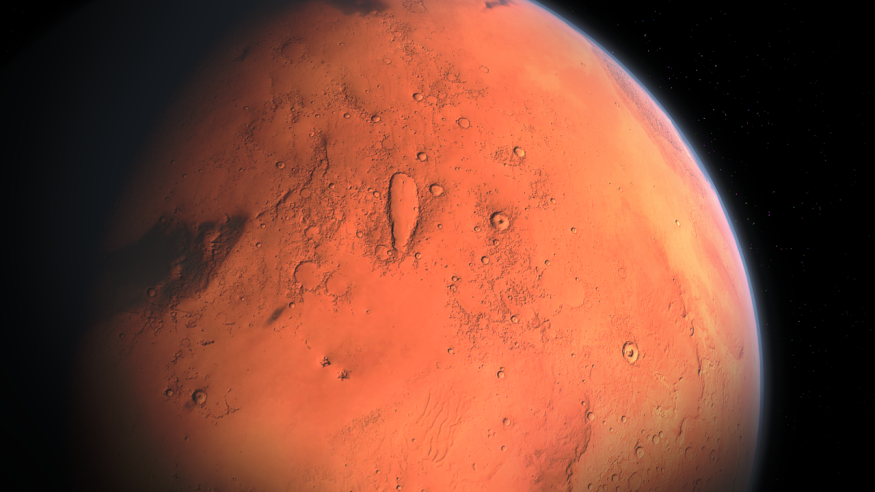In the future, astronauts exploring the Martian skies may enjoy a panoramic view of the Red Planet as if they are looking at it from the International Space Station (ISS).
Recently captured by NASA's Mars Odyssey orbiter, sent a new image showcasing the Martian horizon. The photo was taken during the orbiter's orbit around the planet at an altitude of approximately 400 kilometers (250 miles), a height akin to the International Space Station's average altitude around Earth.

Capturing the Latest Image of Mars Horizon
Capturing Mars horizon proved to be a months-long achievement requiring intricate coordination. Scientists believe this image will enable a comparative analysis of Mars and Earth by examining analogous photos taken from the ISS, offering a perspective similar to that of astronauts in orbit around Mars.
To achieve this extraordinary perspective, scientists on Earth directed commands to physically tilt the entire Odyssey orbiter 90 degrees, aligning the Thermal Emission Imaging System (THEMIS) with the Martian horizon.
THEMIS, fixed in position on the orbiter, usually points straight down at Mars from the spacecraft's belly, primarily utilized for mapping the Martian surface. The complexity of adjusting this fixed view contributed to the prolonged coordination efforts.
The challenges in creating this unique view prompted a three-month planning phase by engineers at NASA's Jet Propulsion Laboratory and Lockheed Martin Space. THEMIS's infrared capabilities enable the mapping of ice, rock, sand, dust, and temperature changes on Mars.
Despite being fixed, the camera can measure atmospheric water ice, or dust in a narrow column beneath the spacecraft, necessitating adjustments for a broader atmospheric view.
The mission aimed for a comprehensive portrayal of the Martian atmosphere, allowing scientists to discern the layers of water-ice clouds and dust in relation to one another. This insight aids in refining models of Mars' atmosphere.
Jeffrey Plaut, Odyssey's project scientist at JPL, likened it to viewing a cross-section or slice through the atmosphere, revealing intricate details not visible from above, the typical perspective for THEMIS measurements.
Repositioning the entire Odyssey spacecraft by rotating it almost 90 degrees, despite causing a temporary communication blackout, successfully adjusted the THEMIS camera's angle, allowing sunlight on solar panels and paving the way for future missions aiming to capture a comprehensive view of the Martian atmosphere across seasons.
NASA's Odyssey Orbiter Captures Unique Views of Mars' Moon Phobos
Aside from the Red Planet, the team also captured images of Mars' small moon, Phobos, using the THEMIS instrument on the orbiter for the seventh time in 22 years to assess temperature variations across its surface. This recent observation presented distinct angle and lighting conditions, contributing a unique component to their collection of Phobos data.
These intricate details offer valuable insights into the moon's composition and physical characteristics, potentially aiding in resolving the ongoing debate regarding Phobos's origin-whether it is a captured asteroid or a fragment ejected from Mars due to an impact, measuring approximately 16 miles (25 kilometers) in diameter.
NASA and JAXA collaborate on the Mars Moon Explorer (MMX) mission, targeting sample returns from both Phobos and its sister moon, Deimos.
Odyssey's Phobos imagery is expected to benefit scientists in both MMX and Odyssey missions, contributing to understanding Phobos's origin, and Odyssey researchers plan to capture more images of the Martian horizon to study seasonal atmospheric changes.
RELATED ARTICLE: NASA's MAVEN Mission Reveals Psychedelic Colors of Mars in Stunning UV Images
Check out more news and information on Mars in Science Times.











